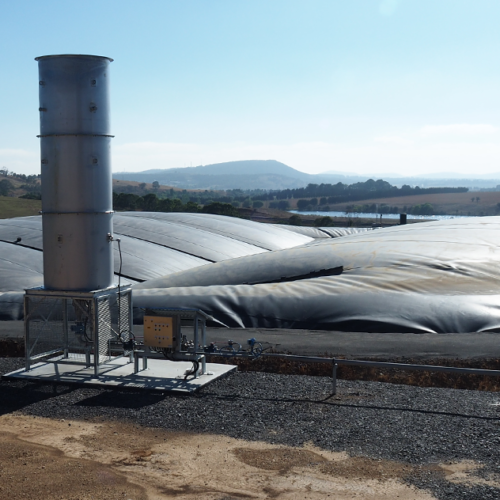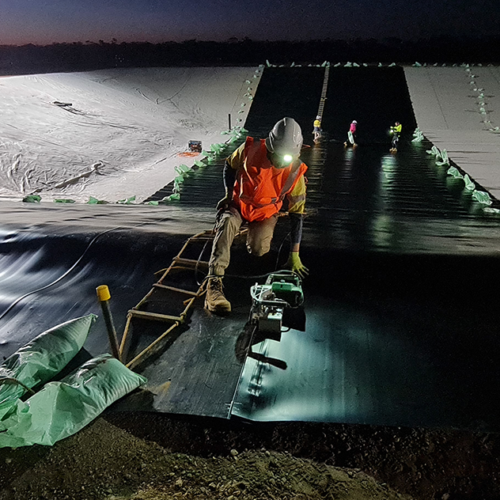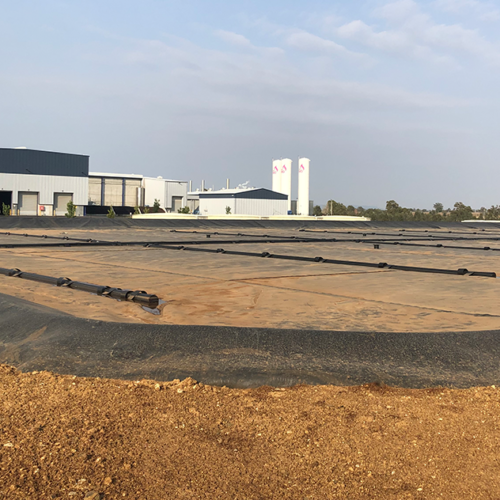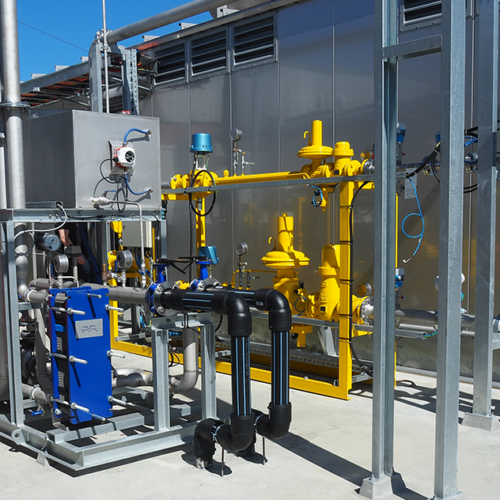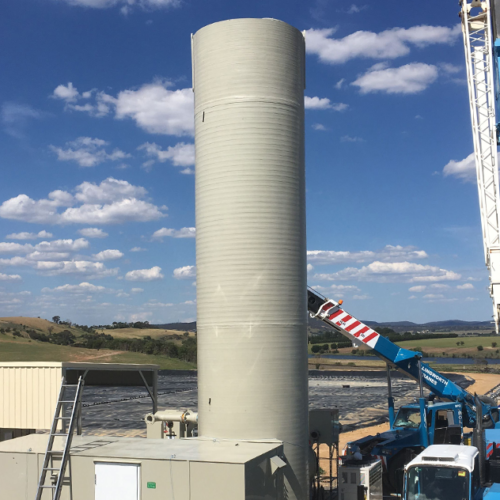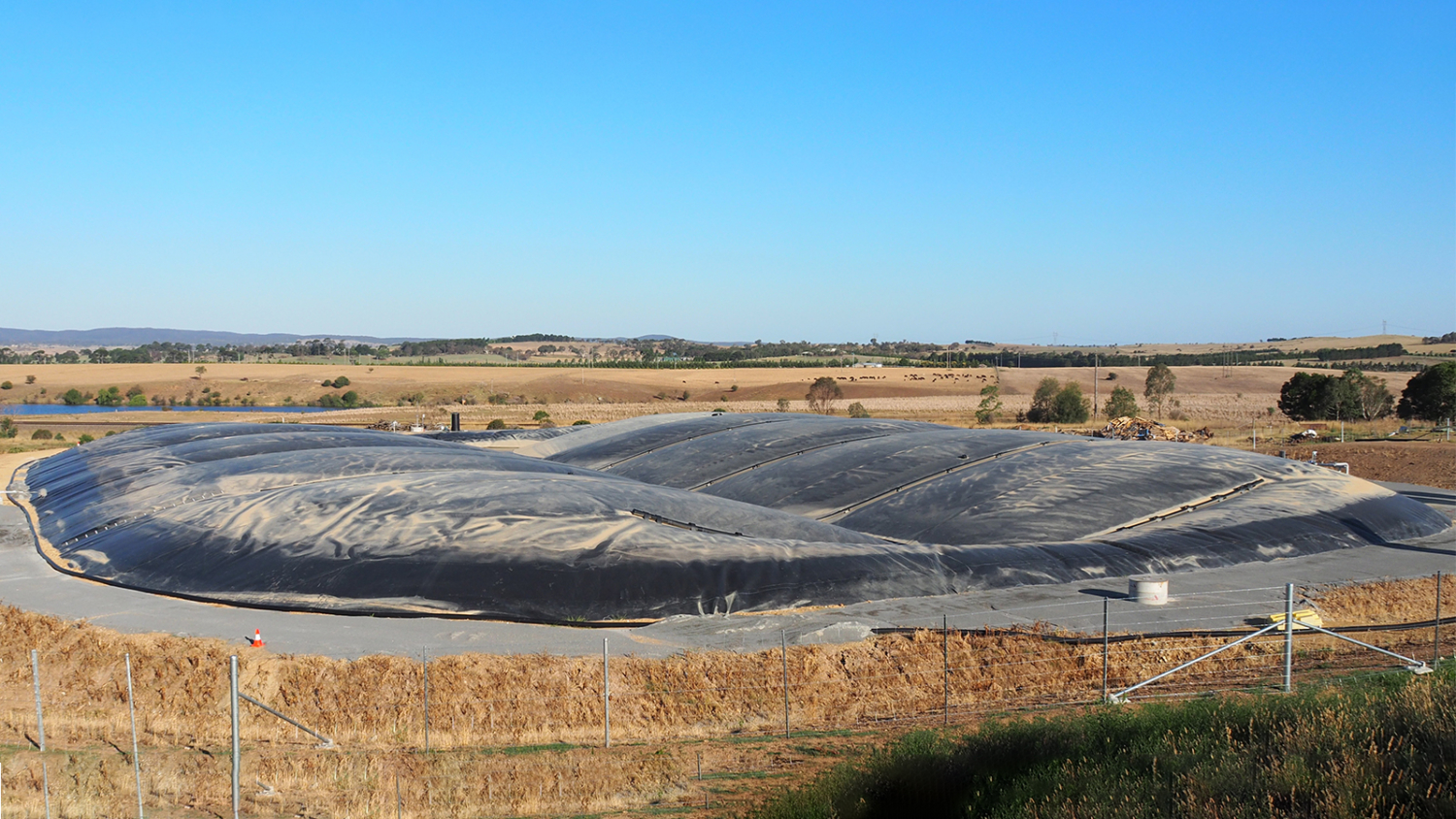
Covered Anaerobic Lagoons (CAL)
Hydroflux is proud to be Australia’s first water treatment and technology company to achieve Climate Active carbon neutral certification for our entire organization. As part of our climate change mission, we continue to research, develop and invest in sustainable technologies.
Now our journey continues – our main range of water technology and associated chemical products are Climate Active certified as carbon neutral. To read more on our journey, click HERE

Covered anaerobic lagoons are ideal for the treatment of industrial wastewaters with high organic loads and will often convert up to 80% of the COD in the wastewater into reusable biogas.
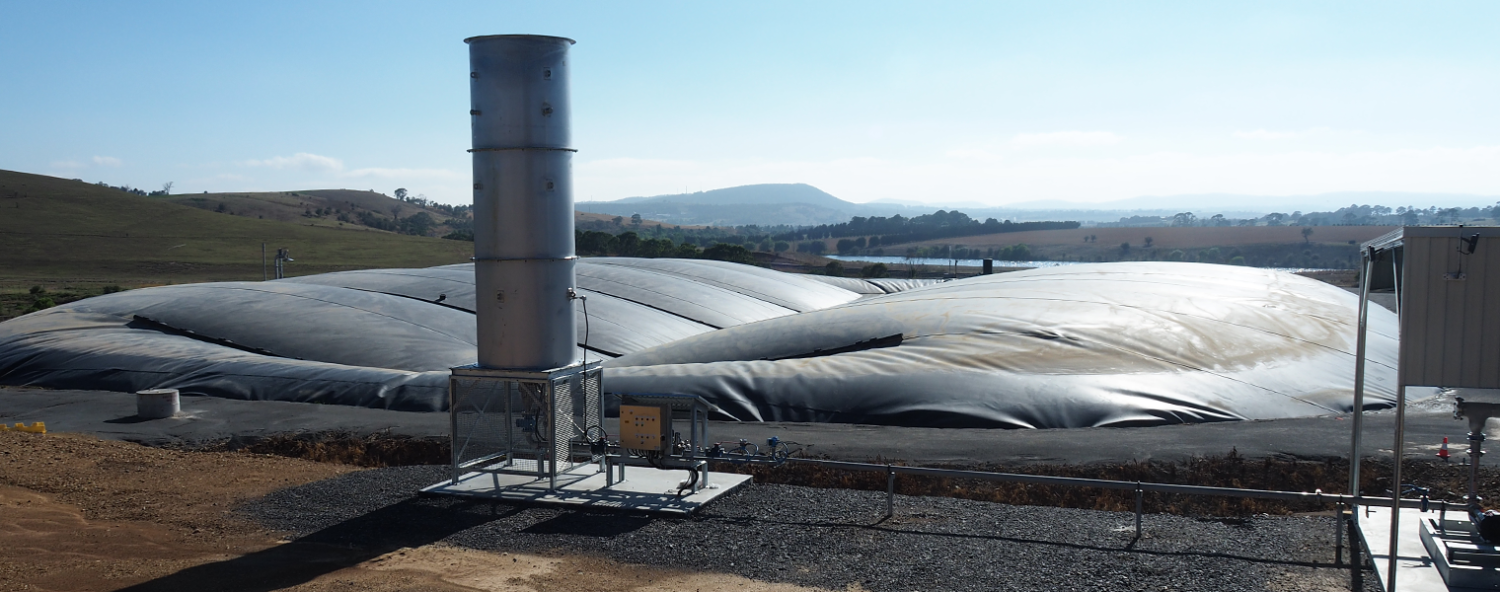
Hydroflux has completed many design and construction projects involving the installation of covered anaerobic lagoons including the handling, treatment and reuse of biogas.
Covered anaerobic lagoons are designed in house and Hydroflux has the facilities to upgrade anaerobic ponds with covers and biogas collection as well as providing comprehensive operation and management contracts.
Find out more
An anaerobic lagoon is a deep basin with sufficient volume to enable sedimentation of settleable solids, digest retained sludge, and convert soluble organic material into biogas.
At the inlet of the pond, wastewater is directed into the sludge blanket in the base where it mixes with the active microbial mass converting organics into biogas. The biogas is collected under the sealed cover and discharged under controlled conditions for treatment and reuse.
Covered anaerobic lagoons may be fitted with heating systems and sludge recirculation when required.
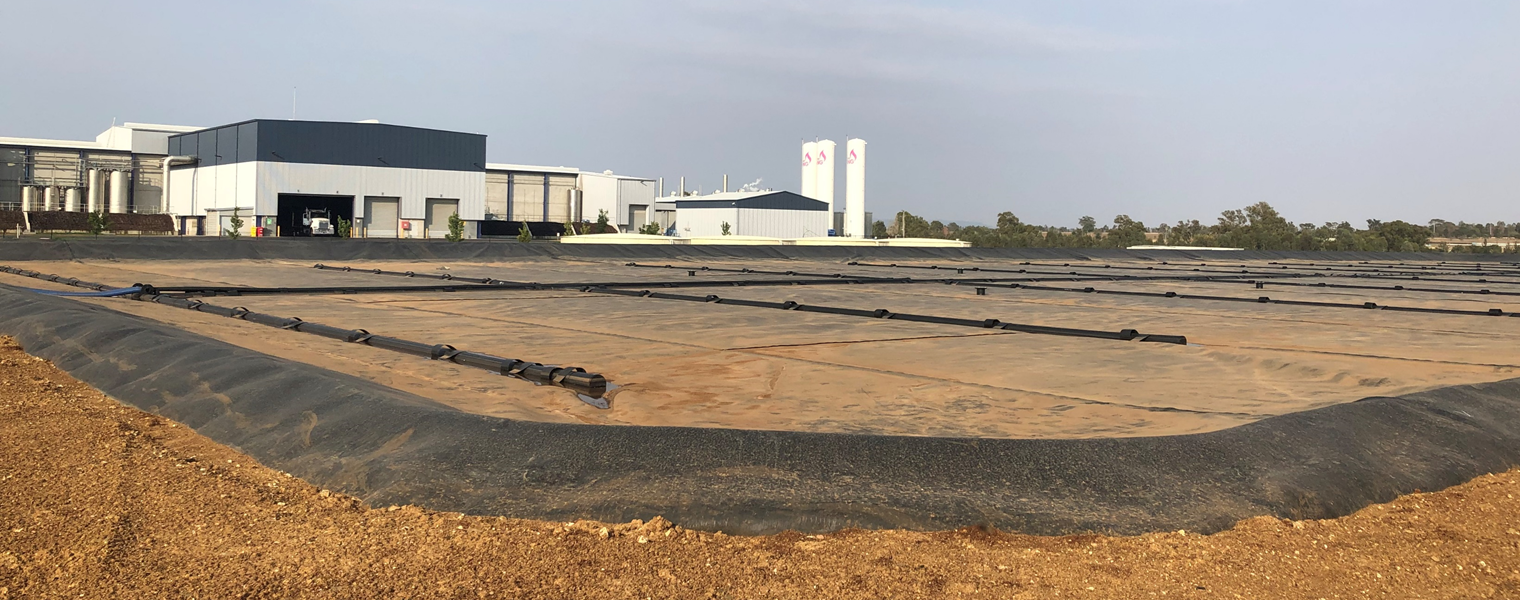
Advantages of Covered anaerobic lagoons
There are several advantages of operating anaerobic lagoon which include
- Minimal energy requirements when compared to aerobic processes.
- The organic matter in the wastewater is mostly converted to reusable biogas.
- Anerobic systems generate considerably less waste sludge than aerobic processes.
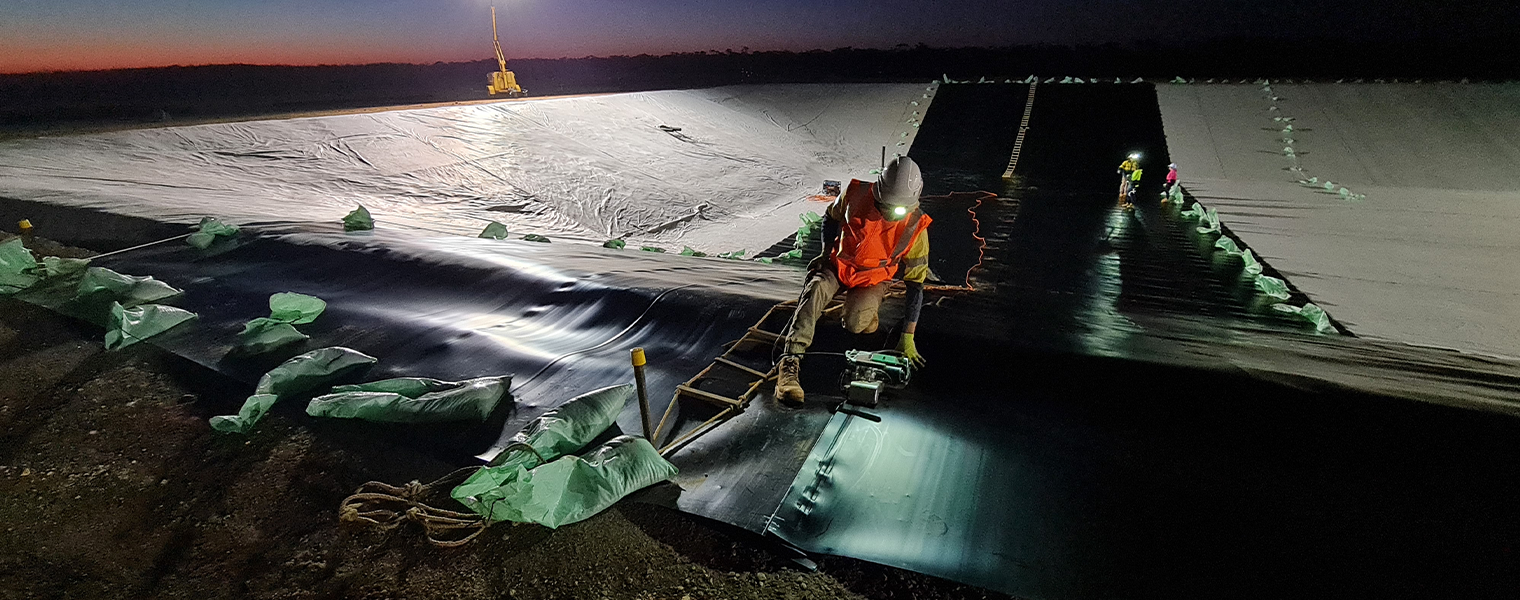
Installation of a liner in a covered anaerobic lagoon.
Biogas is a mixture of gases produced during the anaerobic digestion of organic matter. It is generally composed of 60–65% methane (CH4) and 35–40% carbon dioxide (CO2). Minor constituents are hydrogen sulphide (H2S), nitrogen (N2), hydrogen (H2).
There are many uses for biogas although in industrial applications biogas is most commonly used as an alternate fuel source for boilers and when in sufficient quantities converted to electricity. When biogas is used as a fuel it must be carefully conditioned to the specification required for its intended use.
A gas flare is always installed to allow biogas to be safely burned off whether biogas is being reused or not and treatment of biogas to remove impurities is essential,
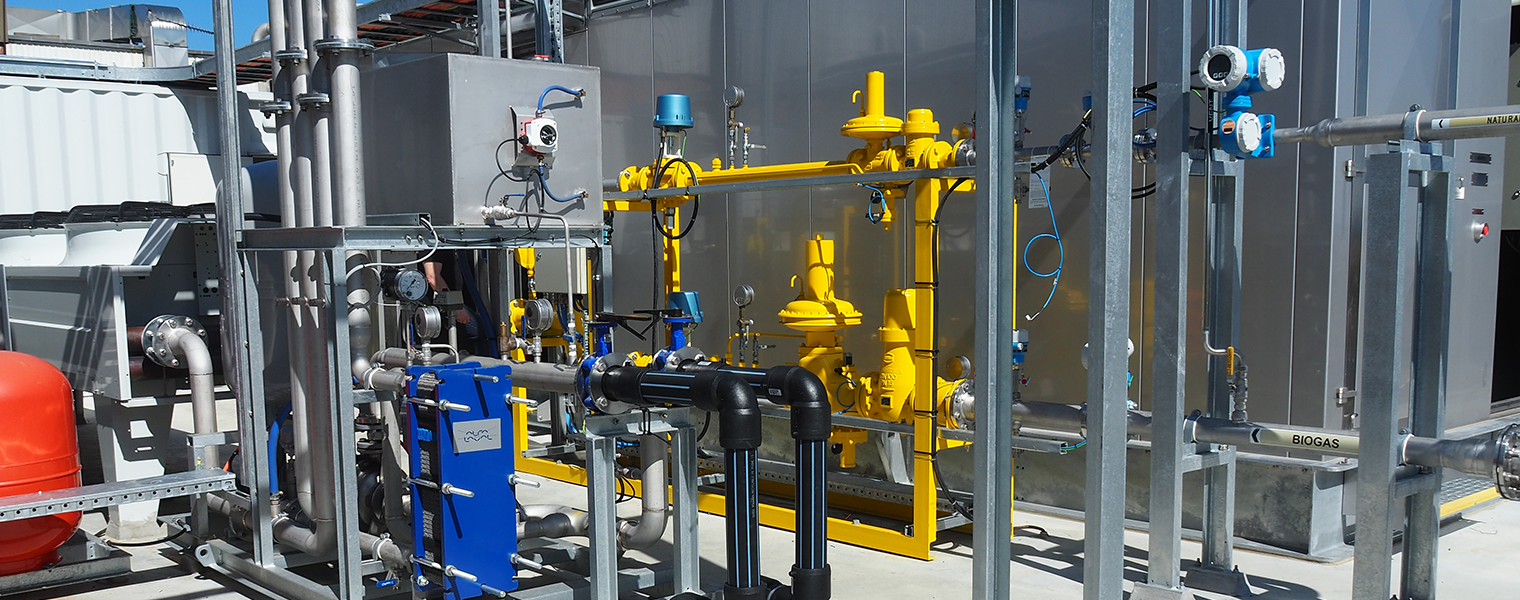
Biogas flare and treatment equipment at a meat works.
Hydroflux supply a range of biogas treatment systems that are engineered to maximise the recovery and utilisation and will comprise:
Biogas Collection
Positive displacement blowers will often be required to transfer biogas from the covered anaerobic lagoon at a controlled rate and pressure to downstream equipment
Biogas Chilling
Digester produced biogas is 100% water saturated as as it cools in the lines to the point of reuse, large amounts of water will condense in the piping system . Hydroflux will incorporate the most suitable biogas cooling system into the treatment process
Biogas Treatment
Removal of hydrogen sulphide from biogas is essential to avoid rapid corrosion. Hydroflux offer a range of chemical, media or biological gas scrubbers that will ensure that the biogas is suitably conditioned for reuse.
Covered anaerobic lagoons are ideally suited for the treatment of industrial wastewater specifically to reduce the concentration of organics whilst generating reusable biogas.
- Meat and poultry industry
- Dairies
- Beverage sector
- Fruit and vegetable processing
- Potato and potato chips
- Vegetable oil processing
- General Food industry
- Manufacturing
- Industrial laundries
- Paper, cardboard and printing
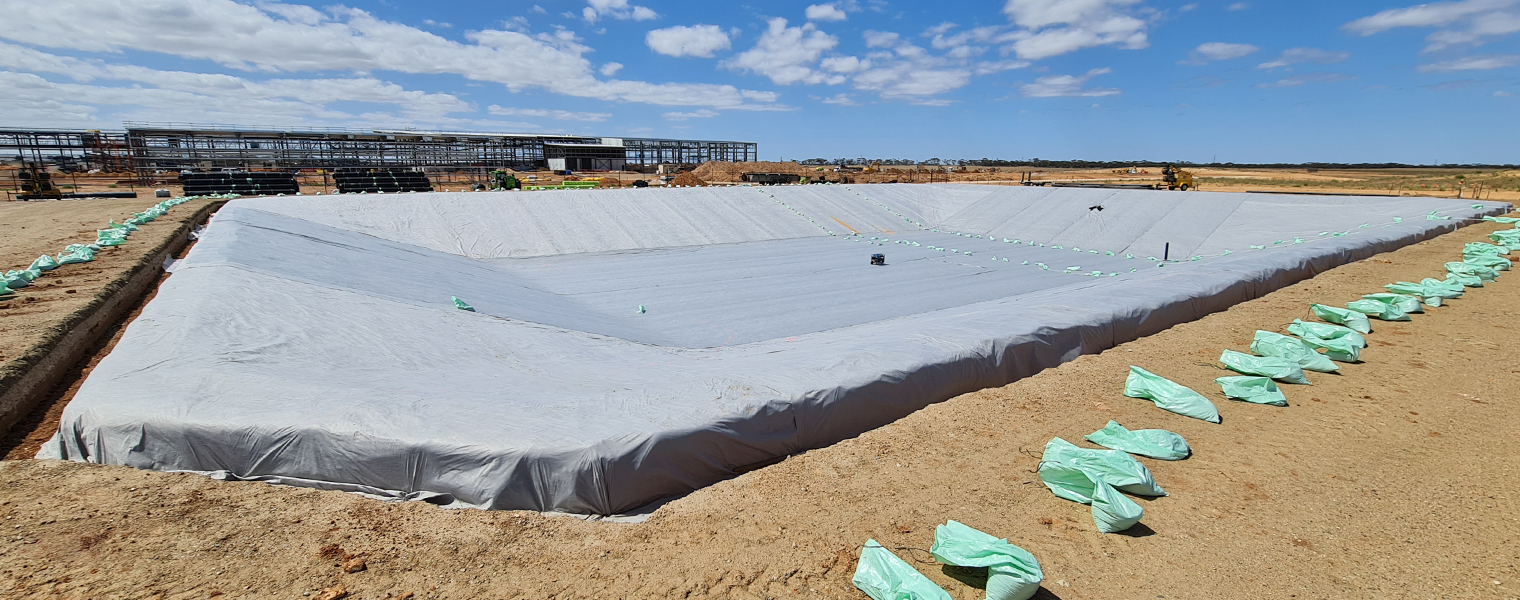
The only limit on the capacity of anaerobic lagoons is the relatively large area that is required. For very large flows, multiple lagoons are often constructed operating in parallel.
Is anaerobic treatment suitable for my application?
There are a number of factors to consider which will determine whether anaerobic digestion of your wastewater is a suitable solution. Firstly, an anaerobic treatment plant will not remove BOD to levels that allow discharge to the environment or for reuse, nor will it reduce the levels of nutrients. In saying this however, for high COD loads, anaerobic digestion upstream of an aerobic process such as the Hydroflux SBR, MBR, MBBR will significantly reduce the load on the aerobic process lowering the overall capital and operating costs of the treatment plant whilst having the possibility of generating and reusing biogas.
Anaerobic treatment is best suited to relatively high flows and for economical gas recovery generally over 3-4T of COD a day would be necessary.
How much space will I need?
The CAL is usually sized based on a loading rate to suit the wastewater characteristics. As a rule of thumb, covered anaerobic lagoons have a hydraulic capacity of 20 days or so.
How much biogas will the system generate?
The amount of gas generated depends on a number of factors but of most value is the COD load. As a rule of thumb for every Kg of COD, 0.35 m3 of biogas will be generated. This biogas will need to be conditioned for reuse as it will be contaminated with carbon-dioxide (CO2) along with some trace gasses such as hydrogen sulphide (H2S), nitrogen (N2), hydrogen (H2) and oxygen (O2).
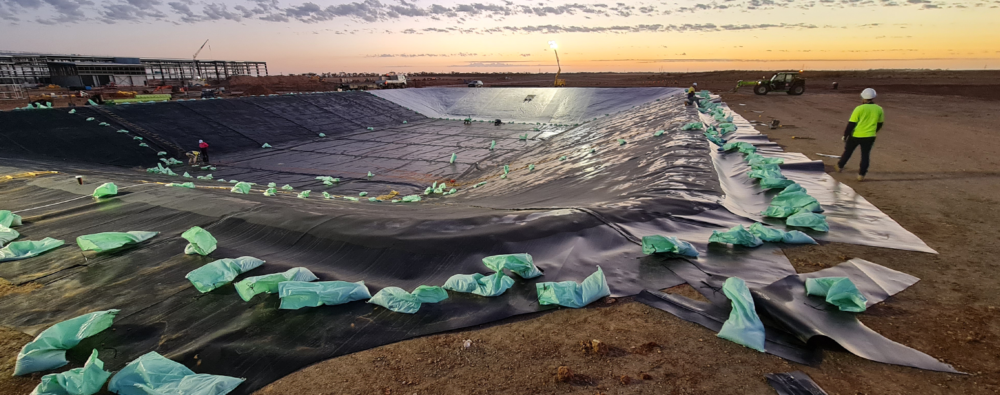
Construction of a covered anaerobic pond at a meat processing plant in SA.
Hydroflux employs qualified civil, mechanical, chemical and electrical engineers plus a team of experienced project managers, site supervisors, commissioning engineers and service technicians based in offices in most capital cities providing a local presence throughout the duration of the project.
All projects are conducted under externally approved occupational health and safety, and environmental management systems.

Hydroflux is Australia’s first Water-tech company to achieve Climate Active certifications which means his means you are engaging with a carbon neutral organisation without increasing your carbon footprint and you are supporting positive and verified action on climate change.

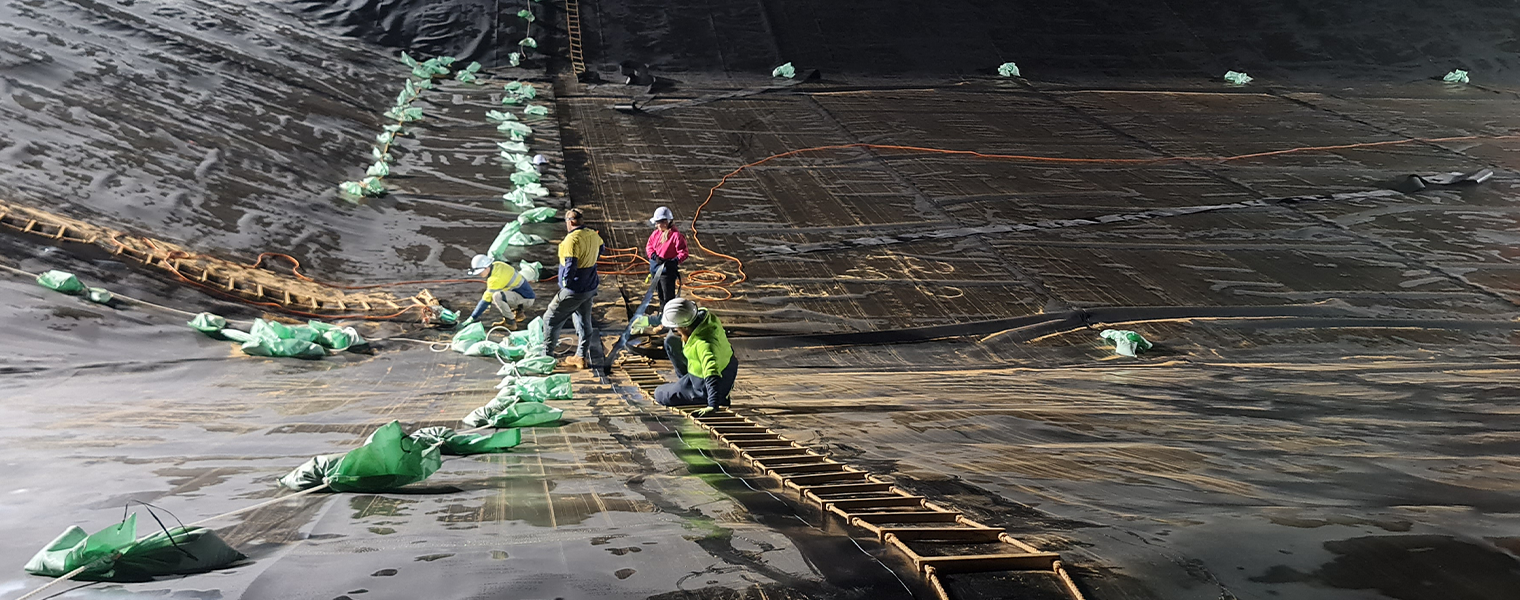
Construction of a covered anaerobic lagoon at a meat processing plant in SA.
Hydroflux can complete all the following works in house which are typically required to construct a wastewater treatment plant.
- Process design, development of PID’s and HAZOPS reviews
- Establishment of the most suitable wastewater treatment plant layout
- Equipment and component selection
- Civil and building designs including preparation of documentation for council or other regulators
- Electrical design and programming
- Project management and site supervision
- Environmental / Occupational health and safety plans and report
- Quality assurance plans
- Earthworks, civil works, building works, mechanical and electrical installation
- Commissioning, training and documentation as required.

CAL at start up at a rendering facility.

